Australasia
Australasia, a region of Oceania, comprises Australia, New Zealand, neighbouring islands in the Pacific Ocean and, sometimes, the island of New Guinea (which is usually considered to be part of Melanesia). Charles de Brosses coined the term (as French Australasie) in Histoire des navigations aux terres australes[1] (1756). He derived it from the Latin for "south of Asia" and differentiated the area from Polynesia (to the east) and the southeast Pacific (Magellanica).[2] The bulk of Australasia sits on the Indo-Australian Plate, together with India.
Physical geography
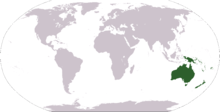
Physiographically, Australasia includes New Zealand, Australia (including Tasmania), and Melanesia: Papua New Guinea and neighbouring islands north and east of Australia in the Pacific Ocean. The designation is sometimes applied to all the lands and islands of the Pacific Ocean lying between the equator and latitude 47° south. Papua New Guinea also includes approximately 600 offshore islands.
Most of Australasia lies on the southern portion of the Indo-Australian Plate, flanked by the Indian Ocean to the west and the Southern Ocean to the south. Peripheral territories lie on the Eurasian Plate to the northwest, the Philippine Plate to the north, and in the Pacific Ocean – including numerous marginal seas – atop the Pacific Plate to the north and east.
Human geography
Geopolitically, Australasia sometimes refers to Australia and New Zealand together – in the absence of another word limited to those two countries; however, the two countries are sometimes referred to collectively as the Antipodes. Sometimes the term also encompasses the island of New Guinea (Papua New Guinea and the Indonesian part of the island). Many organisations whose names include the prefix "[Royal] Australasian Society of ..." limit their scope of operation to just Australia and New Zealand.
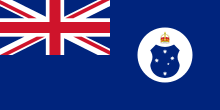
In the past, Australasia has been used as a name for combined Australia/New Zealand sporting teams. Examples include tennis between 1905 and 1915, when New Zealand and Australia combined to compete in the Davis Cup international tournament, and at the Olympic Games of 1908 and 1912.
Anthropologists, although disagreeing on details, generally support theories that call for a Southeastern Asian origin of indigenous island peoples in Australasia and neighboring subregions. The first human habitation of Australia is estimated to have occurred 50,000 or more years ago. These first Australians were the ancestors of the Aboriginal Australians, who form the majority of today's indigenous Australians. They were mostly hunter-gatherers and arrived via land bridges and short sea-crossings from present-day Southeast Asia.
Ecological geography
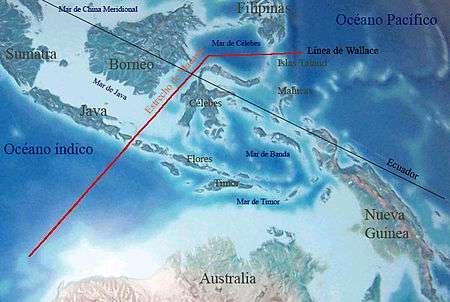
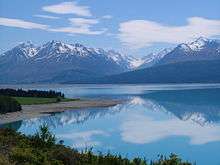
From an ecological perspective the Australasia ecozone forms a distinct region with a common geologic and evolutionary history and a great many unique flora and fauna. In this context, Australasia is limited to Australia, New Guinea, New Zealand, New Caledonia, and neighbouring islands, including the Indonesian islands from Lombok and Sulawesi eastward. The Wallace Line marks the biological divide from the Indomalaya ecozone of tropical Asia – Borneo and Bali lie on the western, Asian side.
Australia, New Zealand and New Caledonia are all fragments of the ancient supercontinent Gondwana, the marks of which are still visible in the Christmas Island Seamount Province and other geophysical entities. These three land masses have been separated from other continents, and from one another, for millions of years. All of Australasia shares the Antarctic flora, although the northern, tropical islands also share many plants with Southeast Asia.
Mainland Australia, New Guinea and Tasmania are separated from one another by shallow continental shelves, and were linked together when the sea level was lower during the Ice Ages. They share a similar fauna which includes marsupial and monotreme mammals and ratite birds. Eucalypts are the predominant trees in much of Australia and New Guinea. New Zealand has no extant native land mammals aside from bats (though it once did), but also had ratite birds, including the kiwi and the extinct moa. The Australasia ecozone includes some nearby island groups, like Wallacea, the Bismarck Archipelago, Solomon Islands, and Vanuatu, which were not formerly part of Gondwana, but which share many characteristic plants and animals with Australasia.
The Australasian ecozone is an ecological region that is coincident, but not synonymous (by some definitions), with the geographic region of Australasia. The ecozone includes Australia, the island of New Guinea (including Papua New Guinea and the Indonesian province of Papua), and the eastern part of the Indonesian archipelago, including the island of Sulawesi, the Maluku islands (the Indonesian provinces of Maluku and North Maluku) and islands of Lombok, Sumbawa, Sumba, Flores and Timor, often known as the Lesser Sundas. The Australasian ecozone also includes several Pacific island groups, including the Bismarck Archipelago, Vanuatu, the Solomon Islands, and New Caledonia. New Zealand and its surrounding islands are a distinctive sub-region of the Australasian ecozone. The rest of Indonesia is part of the Indomalayan ecozone.
From a biological point of view, Australasia is a distinct region with a common evolutionary history and a great many unique plants and animals, some of them common to the entire area, others specific to particular parts but sharing a common ancestry. The long isolation of Australasia from other continents allowed it to evolve relatively independently, which makes it home to many unique families of plants and animals.
Australia and New Guinea are distinguished by their marsupial mammals, including kangaroos, possums, and wombats. The last remaining monotreme mammals, the echidnas and the platypus, are endemic to Australasia. Prior to the arrival of humans about 50,000 years ago, only about one-third of Australasian mammal species were placental.
The boundary between Australasia and Indomalaya follows the Wallace Line, named after the naturalist Alfred Russel Wallace who noted the differences in mammal and bird fauna between the islands either side of the line. The Islands to the west of the line, including Java, Bali, Borneo, and the Philippines share a similar fauna with East Asia, including tigers, rhinoceros, and apes. During the ice ages, sea levels were lower, exposing the continental shelf that links these islands to one another and to Asia, and allowed Asian land animals to inhabit these islands. Similarly, Australia and New Guinea are linked by a shallow continental shelf, and were linked by a land bridge during the ice ages. A group of Australasian islands east of the Wallace Line, including Sulawesi, Halmahera, Lombok, Flores, Sumba, Sumbawa, and Timor, is separated by deep water from both the southeast Asian continental shelf and the Australia-New Guinea continental shelf. These islands are called Wallacea, and contain relatively few Australian or Asian mammals. While most land mammals found it difficult to cross the Wallace Line, many plant, bird, and reptile species were better able to make the crossing.
Australia, New Zealand, and New Caledonia are all portions of the ancient supercontinent of Gondwana, which started to break into smaller continents in the Cretaceous era, 130-65 million years ago. New Zealand broke away first, more than 80 million years ago, and Australia finally broke free from Antarctica about 45 million years ago. All the Australasian lands are home to the Antarctic flora, descended from the flora of southern Gondwana, including the coniferous podocarps and Araucaria pines, and the broadleafed southern beech (Nothofagus), and proteas (Proteaceae).
As Australia moved north into the desert latitudes, the continent became hotter and drier, and the soils poorer and leached of nutrients, causing the old Antarctic flora to retreat to the humid corners of the continent in favor of new drought and fire tolerant flora, dominated by the Eucalyptus, Casuarina, and Acacia trees, and by grasses and scrub where the rainfall was too scarce to support trees. Presently Australia is the smallest continent, and also the driest continent and the flattest (lowest in elevation) continent.
See also
Notes
- ↑ de Brosses, Charles (1756). Histoire des navigations aux terres Australes. Contenant ce que l'on sçait des moeurs & des productions des contrées découvertes jusqu'à ce jour; & où il est traité de l'utilité d'y faire de plus amples découvertes, & des moyens d'y former un établissement [History of voyages to the Southern Lands. Containing what is known concerning the customes and products of the countries so far discovered; and treating of the usefulness of making broader discoveries there, and of the means of setting up an establishment there] (in French). Paris: Durand. Retrieved 2013-12-08.
- ↑ Douglas, Bronwen (2014). Science, Voyages, and Encounters in Oceania, 1511-1850. Palgrave Macmillan. p. 6.
References
- Richards, Kel (2006). "Australasia". Wordwatch. ABC News Radio. Retrieved 2006-09-30.
![]()
External links

- Australasia at New World Encyclopedia
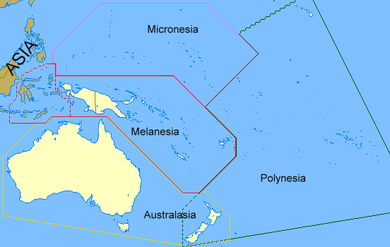
.svg.png)